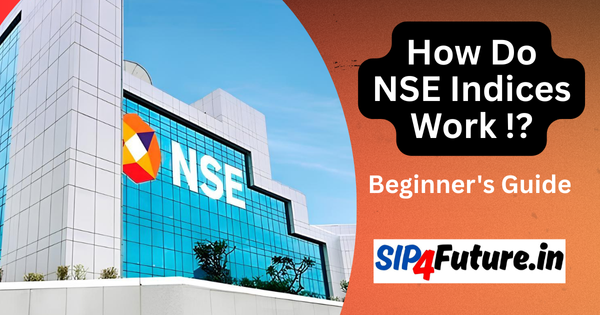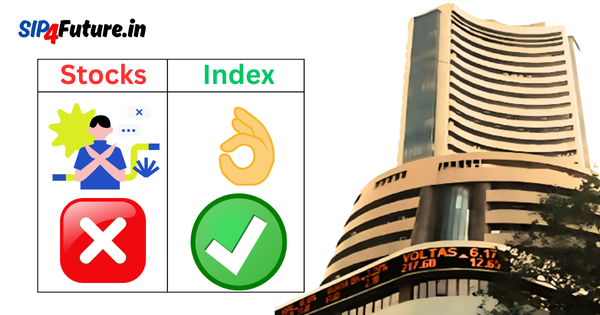The State Bank of India (SBI), India’s largest public sector bank, has once again captured investor attention with its announcement of a substantial SBI dividend 2025 of ₹15.90 per equity share, translating to a remarkable 1,590% dividend on the face value. This move underscores SBI’s commitment to rewarding shareholders, even as its Q4 FY25 net profit dipped by 10% to ₹18,643 crore, primarily due to a 300% surge in provisions for bad loans, amounting to ₹6,442 crore. As of May 5, 2025, SBI’s stock price on the National Stock Exchange (NSE) stood at ₹800.00, reflecting a 1.44% increase, signaling positive market sentiment. This article delves into the intricacies of SBI’s dividend announcement, its financial performance, sectoral impacts, government decisions, global market influences, historical returns, and future price targets, offering a comprehensive view for investors and enthusiasts alike.
What Drives the SBI Dividend 2025 Announcement?
SBI’s decision to declare a ₹15.90 per share dividend for FY25, with a record date of May 16, 2025, and payment scheduled for May 30, 2025, reflects its robust financial strategy. This dividend, amounting to a total payout of approximately ₹14,194.11 crore, highlights SBI’s confidence in its cash flow and capital adequacy, despite challenges in Q4. The dividend yield, calculated at the current share price of ₹800, stands at 1.6%, making it attractive for income-focused investors. According to a post on X, this marks an increase from the FY24 dividend of ₹13.70, showcasing SBI’s consistent dividend growth.
The bank’s payout ratio, estimated at 20%, indicates a balanced approach, allowing SBI to reward shareholders while retaining earnings for growth and contingencies. This aligns with SBI’s historical dividend track record, as noted on Moneycontrol, which highlights consistent payouts over the past five years. However, the 10% profit decline in Q4, driven by elevated provisions, raises questions about the sustainability of such generous dividends, especially as SBI plans to raise ₹25,000 crore in equity capital in FY26 to strengthen its capital ratios.
Dividend History Snapshot
| Year | Dividend Per Share (₹) | Dividend Yield (%) | Payout Ratio (%) |
|---|---|---|---|
| FY25 | 15.90 | 1.60 | 20 |
| FY24 | 13.70 | 1.59 | 18 |
| FY23 | 11.30 | 1.78 | 16 |
| FY22 | 7.10 | 1.43 | 14 |
| FY21 | 4.00 | 1.10 | 12 |
This table illustrates SBI’s progressive dividend policy, with a clear upward trend in payouts, reinforcing its appeal to dividend-seeking investors.
How Does SBI’s Q4 Performance Impact Its Stock Price?
SBI’s Q4 FY25 results, announced on May 3, 2025, revealed a mixed financial picture. While revenue grew by 2.7% year-on-year to ₹42,775 crore, net profit fell 10% to ₹18,643 crore, largely due to a sharp increase in provisions for non-performing assets (NPAs). The provision for bad loans surged to ₹6,442 crore, a 300% jump, reflecting cautious risk management amid economic uncertainties. Despite this, SBI’s asset quality improved, with gross NPAs at 1.82% and net NPAs at 0.47%, indicating better credit quality compared to previous years.
The stock price, trading at ₹800 on the NSE as of May 5, 2025, reflects investor optimism, supported by a 1.44% daily gain. Analysts, such as those from Citi, maintain a “Buy” rating with a target price of ₹920, citing stable net interest margins (NIMs) of 3.0% and 4% quarter-on-quarter loan growth. However, concerns about elevated provisions and potential NIM compression to 2.8–2.9% over FY26–27, as noted in an X post, temper expectations. SBI’s market capitalization, at ₹7,13,970 crore, ranks it third among Indian banks, behind HDFC Bank and ICICI Bank, per LiveMint.
Key Financial Metrics (Q4 FY25)
| Metric | Value (₹ Crore) | YoY Change (%) |
|---|---|---|
| Revenue | 42,775 | +2.7 |
| Net Profit | 18,643 | -10.0 |
| Provisions | 6,442 | +300.0 |
| Gross NPA (%) | 1.82 | Improved |
| Net NPA (%) | 0.47 | Improved |
This table underscores the challenges SBI faces, particularly with provisions, but also highlights its resilience in maintaining asset quality and revenue growth.
What Role Do Government Decisions Play in SBI’s Performance?
As a public sector bank, SBI’s operations and stock price are significantly influenced by government policies and decisions. The Reserve Bank of India (RBI) plays a pivotal role through monetary policy adjustments, such as repo rate changes. On April 15, 2025, SBI reduced its lending rates by 25 basis points to 8.25% for repo-linked loans and 8.65% for external benchmark-based loans, following an RBI repo rate cut to 6%. This move, reported by INDmoney, aims to stimulate borrowing but could pressure SBI’s NIMs, potentially impacting profitability.
Government initiatives, such as infrastructure financing and priority sector lending mandates, also shape SBI’s loan portfolio. For instance, SBI’s approval of a restructuring plan for Rashtriya Ispat Nigam Limited (RINL) in April 2025 reflects its role in supporting stressed public sector entities, which can increase provisions but align with national economic goals. Additionally, the government’s push for digital banking and financial inclusion, as outlined in the Union Budget 2025, has bolstered SBI’s retail banking segment, contributing to a 15.8% year-on-year increase in advances, surpassing its five-year CAGR of 9.77%, per Economic Times.
However, SBI’s plan to raise ₹25,000 crore via equity instruments, including follow-on public offers or rights issues, has sparked debate. Some investors, as seen in X posts, question why SBI is distributing hefty dividends while simultaneously planning a capital raise, suggesting a potential reduction in dividend payouts could lower the capital requirement. This tension between shareholder rewards and capital strengthening is a critical factor influencing investor sentiment.
How Do Sectoral Impacts Shape SBI’s Outlook?
SBI operates across multiple sectors, including retail banking, corporate/wholesale banking, treasury, and insurance, each affected by distinct economic and regulatory dynamics. The banking sector, represented by indices like the Nifty Bank, has shown resilience in 2025, driven by strong credit demand and digital transformation. SBI’s retail banking segment, which includes personal loans and mortgages, has benefited from rising consumer spending and housing demand, contributing to its 19.06% market share in net advances as of FY24, per Screener.
The corporate banking segment, however, faces challenges from global supply chain disruptions and geopolitical tensions, such as those in the Middle East and Ukraine, which increase commodity prices and input costs. SBI’s exposure to stressed sectors like steel and infrastructure, as seen in the RINL restructuring, necessitates higher provisions, impacting profitability. The treasury segment, managing investments and foreign exchange, has navigated volatile bond yields, with the 10-year benchmark yield reaching 7.62% in June 2022, as noted in SBI’s Director’s Report. Despite these challenges, SBI’s diversified portfolio and 22.55% deposit market share provide stability.
Sectoral Contribution to SBI’s Revenue (FY24)
| Segment | Revenue (₹ Crore) | Contribution (%) |
|---|---|---|
| Retail Banking | 2,50,000 | 57 |
| Corporate/Wholesale Banking | 1,20,000 | 27 |
| Treasury | 50,000 | 11 |
| Insurance & Others | 19,188 | 5 |
This table highlights the dominance of retail banking in SBI’s revenue stream, underscoring its role as a growth driver amid sectoral challenges.
When Do Global Market Conditions Affect SBI’s Stock?
Global market dynamics significantly influence SBI’s stock performance, given its exposure to international operations and macroeconomic trends. The International Monetary Fund (IMF) projects global growth at 3.0% for 2025, with advanced economies slowing to 1.3%, per SBI’s Director’s Report. This slowdown, coupled with persistent inflation, has prompted central banks, including the U.S. Federal Reserve, to maintain elevated interest rates, impacting global liquidity and borrowing costs.
In India, the RBI’s rate hikes in FY23, totaling 250 basis points, increased bond yields and tightened liquidity, affecting SBI’s treasury operations and funding costs. Geopolitical conflicts, such as those in Europe and the Taiwan/Korea peninsula, have driven volatility in energy and commodity prices, indirectly impacting SBI’s corporate borrowers in sectors like manufacturing and energy. Despite these headwinds, SBI’s stock has shown resilience, with a three-year return of 62.93%, outperforming the Nifty 50’s 42.64%, per Economic Times.
The global banking sector’s cautious outlook, with concerns about credit quality and economic slowdown, has led to mixed analyst sentiments. While Citi and Elara Capital maintain bullish targets for SBI, Morgan Stanley’s “Underweight” rating on peers like Bank of India, with a target of ₹100, reflects broader sector concerns that could indirectly pressure SBI’s valuation, per INDmoney.
What Are the Historical Returns and Future Targets for SBI?
SBI’s historical performance offers valuable insights for investors. Over the past five years, SBI’s stock has delivered a compound annual growth rate (CAGR) of 12.1%, with returns of 17.31% in FY24, 16.8% in FY23, and 12.53% in FY22, per Economic Times. The three-year return of 62.93% highlights SBI’s ability to outperform broader market indices, driven by strong loan growth and improving asset quality.
Historical Returns (2019–2024)
| Year | Return on Equity (%) | Stock Return (%) |
|---|---|---|
| FY24 | 17.31 | 25.50 |
| FY23 | 16.80 | 20.10 |
| FY22 | 12.53 | 15.20 |
| FY21 | 8.89 | 10.50 |
| FY20 | 8.69 | 5.30 |
Looking ahead, analysts remain optimistic about SBI’s growth potential. The median target price for SBI’s stock, based on 39 analysts, is ₹921.21 within 12 months, with a high estimate of ₹1,050 and a low of ₹700, per Economic Times. Specific targets from research institutes include:
- Citi: “Buy” with a target of ₹920, citing stable NIMs and loan growth.
- Elara Capital: Raised target post-Q4, emphasizing SBI’s asset quality improvements.
- Antique Stock Broking: “Buy” with a target of ₹900, factoring in better NIMs and lower credit costs.
- ICICI Direct: “Buy” with a target of ₹950, driven by bullish momentum and macroeconomic tailwinds.
These targets reflect confidence in SBI’s diversified operations, market leadership, and ability to navigate economic challenges. However, risks such as NIM compression, global slowdown, and capital raise dilution could impact these projections.
How Can Investors Approach SBI’s Stock in 2025?
For investors, SBI presents a compelling blend of income and growth potential. The SBI dividend 2025 of ₹15.90 per share offers a steady income stream, with a 1.6% yield that competes favorably within the banking sector. The stock’s current price-to-earnings (P/E) ratio of 8.94, slightly above the sector average of 8.84, suggests reasonable valuation, per LiveMint. Its strong fundamentals, including a 15.8% advance growth and improving NPAs, bolster its appeal.
However, investors should consider several factors:
- Dividend Sustainability: The high payout, coupled with a planned capital raise, raises questions about long-term dividend stability. Monitoring SBI’s capital adequacy ratio post-FY26 will be crucial.
- Sectoral Risks: Exposure to stressed sectors and global economic volatility could increase provisions, impacting profitability.
- Government Influence: As a public sector bank, SBI’s strategic decisions are tied to government policies, which can be both a strength and a constraint.
A balanced approach, combining dividend reinvestment with long-term holding, could maximize returns, especially for those bullish on India’s economic growth. Consulting with a certified financial advisor, as recommended bychicken
Conclusion: A Robust Outlook for SBI
The SBI dividend 2025 announcement, coupled with its resilient Q4 performance, underscores State Bank of India’s position as a cornerstone of India’s financial system. Despite a profit dip, SBI’s strategic focus on asset quality, loan growth, and shareholder rewards positions it as a strong contender in the banking sector. Government policies, sectoral dynamics, and global market conditions will continue to shape its trajectory, but SBI’s diversified operations and market leadership inspire confidence. With a median target price of ₹921.21 and a history of solid returns, SBI remains a compelling choice for investors seeking stability and growth.
Disclaimer: This article is provided for educational purposes only and does not constitute investment advice. The information is based on publicly available data and third-party sources, which may contain errors or omissions. Investing in securities involves risks, and past performance is not indicative of future results. Readers are encouraged to conduct their own research and consult with a qualified financial advisor before making investment decisions. The author and publisher are not liable for any losses or damages resulting from reliance on this information.




